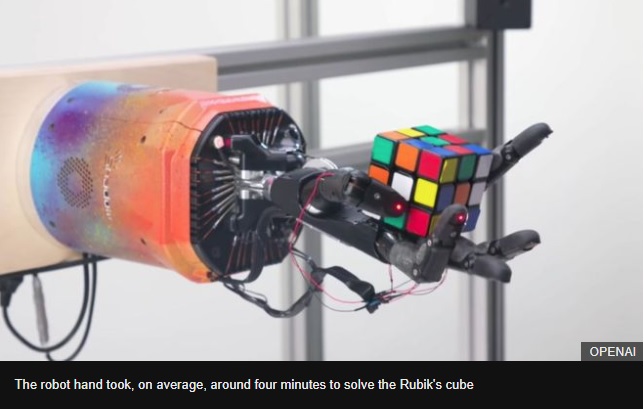
A remarkable robot, capable of solving a Rubik’s cube single-handedly, has demonstrated just how far robotics has advanced - but at the same time, experts say, how far we still have to go.
OpenAI’s system used a computer simulation to teach the robot hand to solve the cube, running through routines that would take a single human some 10,000 years to complete.
Once taught, the robot was able to solve a cube that had been slightly modified to help the machine tell which way up it was being held.
Completion time varied, the research team said, but it generally took around four minutes to complete the task.
Using machine-learning and robotics to solve a Rubik’s cube has been achieved before. Notably, in March 2018, a machine developed by engineers at MIT managed to solve a cube in just 0.38 seconds.
What’s significant with OpenAI’s effort is the use of a multi-purpose robot, in this case a human-hand-like design, rather than a machine specifically designed to handle a Rubik’s cube and nothing else.
“The ability to solve the Rubik’s cube in the real world, on a robot hand, is actually extremely difficult,” said Matthias Plappert, team leader for robotics at OpenAI, speaking to the BBC.
“You need to very precisely control your fingers, you need to do it for a very long time without kind of messing up in between. and a lot of different things can happen in the process.”
Mr Plappert hailed the team’s method of gradually injecting complications into the process - simulated hindrances that would force the robot to adapt in order to complete the cube.
This technique - called automatic domain randomisation (ADR) - was used, the team said, to give the robot consistent, intricate dexterity that can handle changes in the environment that go beyond what a computer could predict and simulate.

